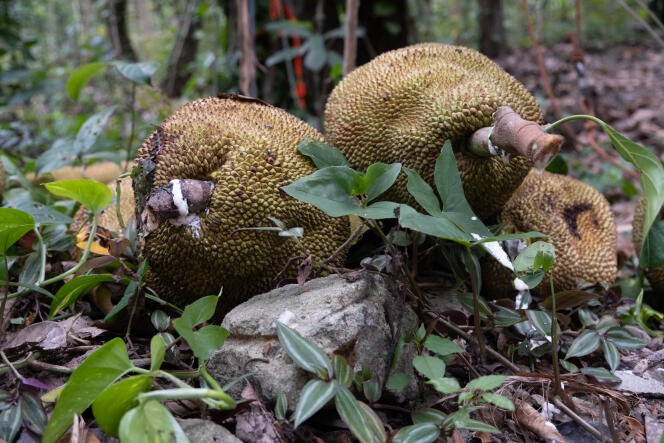LETTER FROM RIO DE JANEIRO
Like many cyclists in Rio de Janeiro, Eduardo Richard, a 34-year-old oceanographer, trains several times a week in Tijuca National Park, a tropical oasis that covers a massif in the heart of the city. “It’s a paradise for cycling: there are few cars and a lot of climbs”explains the sportsman with an athletic figure, who is taking advantage of this Saturday morning in September to do his usual route before the heat becomes suffocating.
But a few years ago, an event spoiled his ride: on March 2, 2018, while the young cyclist was going down a path, he slipped at the turn of a curve on one of these enormous green fruits which were rotting on the ground and stink up the forest. “My right knee was bleeding and my elbow hurt for days”he remembers, as he revisits the scene of the accident.
Known as “jackfruit” or jacque, this fruit with leathery skin covered in small peaks and fibrous flesh, which can weigh up to 30 kg, has become one of the main enemies of Rio cyclists de Janeiro. “It’s a danger!”estimates Eduardo Richard, helmet on his head and speed glasses. If I had gone faster, I could have broken my arm. » Growing in tropical climates, jackfruit trees abound in the park: just look up to see their imposing fruits hanging above the paths. These trees can reach 20 meters in height.
“An invasive species”
Eduardo considers himself ” lucky “ : on February 10, 2021, a jackfruit fell on the head of a cyclist who immediately fainted. “As if all the problems we face on the road due to lack of respect from drivers weren’t enough, now we have to worry about jacks! »the Rio de Janeiro cyclist safety committee was then indignant on Facebook, calling on the management of the Tijuca National Park to ” cut “ jackfruits.
This request delights scientists: they have also been fighting for years to reduce the jackfruit population in protected areas such as Tijuca. “It’s an invasive species”explains Rodolfo Abreu, 41, specialist in exotic plants of the Atlantic forest, the ecosystem which extends over 100,000 km2 from the southeastern coast of Brazil. Only about 10% of the original surface area of this thousand-year-old forest remains, devastated in the 19th century.e century for the benefit of coffee plantations, and which is home to some 8,000 endemic plants.
You have 55.64% of this article left to read. The rest is reserved for subscribers.
